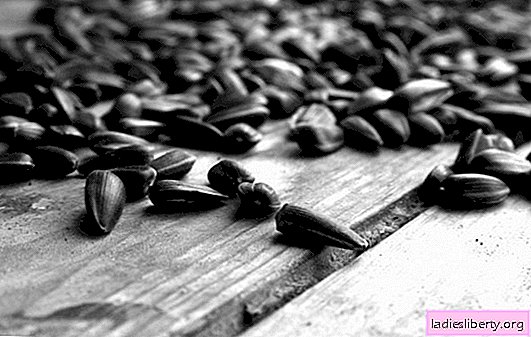
Acute toothache always occurs unexpectedly and at the most inopportune moment.
In most cases, this is due to a panic fear of the dentist. Everyone understands that you need to visit the dentist at least once every six months, but the fear of the dentist forces you to postpone the trip for an indefinite time.
All inflammations in the roots of the tooth (periodontitis) are considered quite dangerous. If you continue, not paying attention to pain and discomfort in the tooth, prolong the treatment process, the inflammation will go from the pulp to the tooth roots, reach the base of the root and lead to the formation of purulent sacs. Inflammation of the root of the tooth, affecting the tooth canals and the vessels and nerves located in them, is called pulpitis by dentists. Thanks to the protective layer of enamel, an infection cannot penetrate the root of a healthy person. Enamel damage is the entrance gate for various bacteria and the further development of inflammation of the tooth root.
Tooth root inflammation - causes
There are two main causes of tooth root inflammation:
- infection;
- tooth injury.
In turn, the cause of infection that caused inflammation of the root of the tooth can be:
- untimely appeal to the doctor;
- Inadequate treatment of dental pulpitis;
- the occurrence of pulpitis under the tooth crown: if the crown injures the gums, when the crown is displaced, this place becomes the entrance gate for infection and the further development of inflammation;
- The so-called marginal pulpitis, when the infection spreads from other sources not related to caries, and spreads from the oral cavity along the root of the tooth. In the same way abscesses are formed along the jawbone and the roots of the inflamed teeth; while the crowns (if any) remain intact;
- Infectious diseases of a different localization (sinusitis, tonsillitis).
In all these cases, bacteria enter the dental canals and actively propagate inside the canals, spreading the infection deep into the root and along it.
The causes of injuries can lead to inflammation of the root of the tooth:
- tooth root fracture;
- poorly sealed tooth, which in the process of chewing food is subjected to constantly high load;
- various dislocations among athletes and musicians;
- injuries of vessels and nerves of the root canal up to their rupture, leading to tooth mobility and high susceptibility to infection;
- the use of certain antiseptics in the treatment, in rare cases - with the use of arsenic.
Tooth root inflammation - symptoms
Features of acute tooth root inflammation
Inflammation of the root of the tooth (periodontitis) can occur acutely and chronically.
An acute course is manifested, like any inflammatory process, by the following symptoms: redness, swelling, pain.
Bleeding and soreness of the gums appears at the site of inflammation, with pressure on the tooth, the pain intensifies sharply, enlarged regional lymph nodes can be palpated.
There is an increased sensitivity of the tooth to all irritants: temperature, mechanical, chemical.
With a far-reaching inflammatory process, symptoms of general intoxication join in: fever, severe headaches, severe weakness, signs of inflammation (leukocytosis, elevated ESR) are determined in a general clinical blood test. If you do not immediately start treatment, an abscess or phlegmon may form under the root of the tooth, the inflammation will go to the sinuses, and with further spread of the infection, sepsis or osteomyelitis will develop.
Features of the course of chronic inflammation of the tooth root
The chronic course of inflammation of the root of the tooth is characterized by the severity of symptoms. Usually there are complaints of discomfort and unusual sensations during eating, bad breath, which others notice.
Often, chronic inflammation has no symptoms. But further fistulas form that open on the gums or on the face. These far-reaching changes can be seen by chance during an X-ray examination when handling for another reason.
Only the occurrence of pain makes you seek medical help. This occurs with a pronounced exacerbation of the chronic sluggish process. The chronic course of inflammation of the root of the tooth is dangerous because in many cases it is necessary to remove the tooth.
With late call for medical help, the infection spreads rapidly, and in the future this may lead to the need to remove, possibly several teeth.
Symptoms of chronic inflammation of the tooth root in trauma
With inflammation of the root of the tooth that has arisen after an injury (for example, if the root of the tooth is broken), bleeding of the gums joins the above symptoms, a dark border appears at the place the gum adjoins the tooth.
In the case of total destruction of the root (fragmentation) as a result of trauma, severe gum edema is observed, in which the patient cannot close his mouth and close his teeth.
Tooth root inflammation - treatment
Only a doctor can cure tooth root inflammation. The patient himself, if he wants to have healthy teeth, must consult a specialist in a timely manner.
The treatment of inflammation of the root of the tooth largely depends on the cause of the process, on the stage and severity of the course.
In general, the treatment of acute and chronic inflammation is similar, but has some differences.
The main task in the treatment of acute periodontitis is to free inflamed tissues from pus and to preserve the tooth as much as possible. Sometimes the patient himself, due to the diffuse pain, cannot exactly indicate a bad tooth. In such cases, an X-ray examination is performed. Subsequently, tissue damaged by caries is removed under anesthesia, and if necessary, the damaged tooth pulp is also removed.
In the case of the development of the inflammatory process as a result of poor-quality filling, the filling is subject to removal, after which the canals are instrumentally processed, thoroughly washed with antiseptics and expanded.
After these therapeutic measures, a course of antibiotic therapy, taking anti-inflammatory (NSAIDs) and anti-allergic drugs is required.
A new seal is not placed until the course of treatment is completed. Therefore, before eating, the cavity in the diseased tooth is closed with a cotton swab. After two to three days, the canals of the inflamed root of the diseased tooth are washed with antiseptics, put drugs with prolonged action and close them with a temporary filling. If pus is not found in the canals, the pain stopped by the time of the visit to the specialist, a permanent seal is placed. A control x-ray study is required to confirm the quality of treatment.
In the treatment of chronic forms of inflammation of the root of the tooth, washing with antiseptic drugs, treatment with root canals, and removal of the nerve are performed.
Further treatment tactics have significant differences. After washing the canals, a swab with an antiseptic is placed in the cavity of the inflamed tooth and a temporary filling is placed, a course of antibacterial therapy is prescribed.
If after the end of taking the antibiotic there are no signs of further spread of the infection, the canals are re-cleaned and a temporary filling with calcium hydroxide is placed for a period of two to three months. Such a seal is a good antiseptic.
In parallel, physiotherapeutic treatment is carried out, including UHF, electrophoresis with anti-inflammatory drugs.
After the specified period of treatment, if it was possible to achieve the desired result and the inflammation is stopped, the canals are cleaned, filled and a control x-ray is done.
During the next visit to the dentist, a permanent filling is performed. In the absence of the effect of the treatment, if the inflammatory process continues to spread, they resort to surgical intervention.
It should be noted that the treatment of inflammation of the root of the tooth is a long process.
The success of treatment depends, first of all, on the timeliness of contacting a specialist, the severity of the inflammatory process and the anatomical features of the structure of the diseased tooth. To preserve teeth, to prevent complications and the occurrence of relapses, it is necessary to visit the dentist at the slightest symptoms of inflammation and strictly follow all doctor's appointments.











